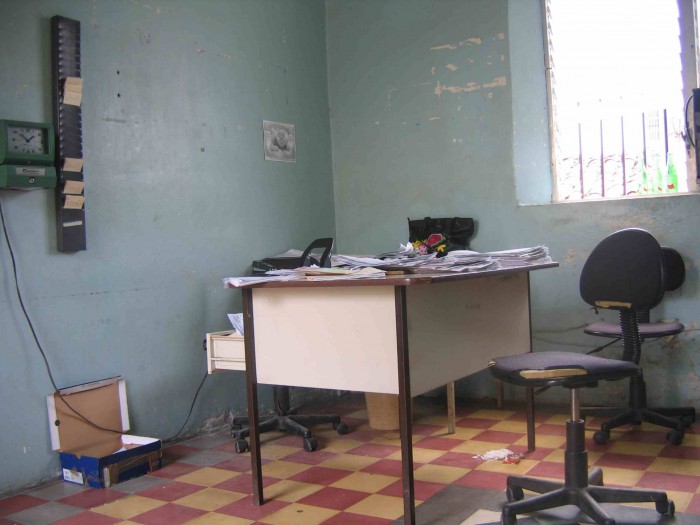Department of Social Research (2010)
Residency proposal:
Department of Social Research / 2010 Social Report
(the following was a proposal for the creation of a new department of social research within the offices of the Museum of Contemporary Art in Chicago. The proposal was not accepted.)
Summary
The proposed project consists in the creation of a temporary department at the museum which will have as its mission to research the social interstices of contemporary art as reflected within the context of the museum. The results of the research of this department would result in a public presentation that would be developed and proposed for discussion, but which could take the form in a combination of the following formats:
1. a hybrid information desk / office at a public area of the museum on the last month of the residency
2. a public program and/or performance, tentatively titled 2010 Social Report
3. a small publication with contributions by museum staff and outside artists, curators, and visitors.
Description
A key aspect of the work of contemporary art institutions is to study and detect the shifts in current cultural/artistic discourse and exhibit the work that best reflects those shifts.
In the standard organizational structure of a contemporary art museum, however, resources (staff and budget) are mainly directed toward programming implementation and not enough toward debate and experimentation. Moreover, while the various departments in a contemporary art museum or kunsthalle — Curatorial, Education, Marketing, PR, Visitor Services, Development —engage with different audiences at a variety of levels, there are implicit of unspoken dimensions of social interaction that currently fall by the wayside or exist within “gray areas” that are superficially contemplated or simply or not addressed by any of those departments.
This project seeks to precisely study and embrace those “gray areas” by creating a “third space” within the museum that will be inserted between the outside and the inside of the institution, both as an art and an institutional project, and one which would seek to expose the ambiguities of social experiences around art making using the museum as a case study.
The goal of this project is to develop a social software that can be implemented and applied by other museums that seek to break the barriers between art and non-art public, informed vs. non-informed, and administration vs. public.
Borrowing a reference from Marcel Broodthaers (who created his own “Musee d’Art Moderne, Department des Aigles), and speaking directly —as well as critically — to the legacy of relational aesthetics and institutional critique, Department of Social Studies comes as part of a long-developing interest of mine in what I regard as an emerging field which I have described as the “Sociology of Art” or “Artworld Studies”. I have explored this subject in a variety of way through the years, primarily through a book published in 2005 entitled The Pablo Helguera Manual of Contemporary Art Style —a social etiquette manual for the art world— and a series of scripted panels/ theoretical symposia played by actors without an explicit announcement to the audience. This book and these panels have sought to expose the social dynamics of the art world, opening the process to allow a better understanding on how art is valued, understood, and interpreted, while at the same time trying to make this process transparent to an outside audience.
Creating a department within the institution is, in my view, a natural step to bring the art studio into the museum and provide the audience with a glimpse as to how a department within a museum works. I would request, as department head, the necessary computer terminal, desk and extension, participation in meetings, and inclusion in regular official correspondence within the institution. While I would not be able to be physically present at the museum for most of the duration of the project, I would request to have an intern or volunteer participating in this department producing correspondence, creating reports and helping out with research. I would request collaboration from the staff to help out in the studies, meetings and discussions generated by this department, and similarly would make this department available to meet with other departments to discuss their challenges, opportunities, needs and common goals.
Tags: Art Market, art scene studies, Museums, Sociology of art
